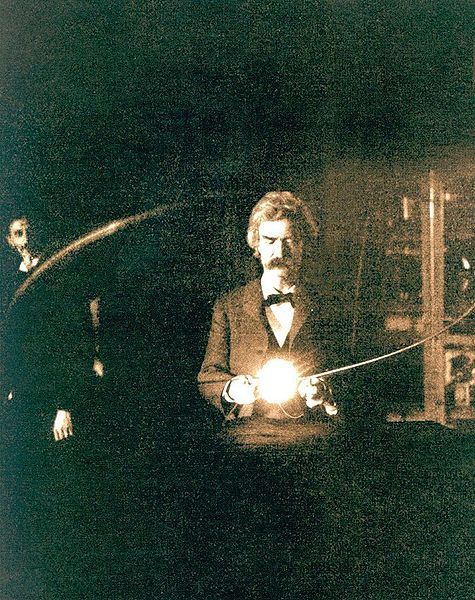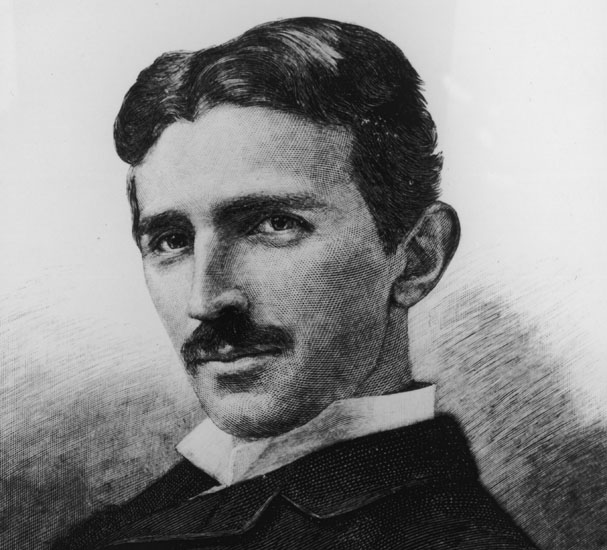A Tesla coil is a resonant transformer circuit invented by Nikola Tesla at the end of the 19th century. It is used to produce high voltage, relatively high current, high frequency AC electricity. Some people make music out of it.
“What you hear is audio modulated thunder”, Joe DiPrima of Arcattack, a band from Austin, Texas, explains. During their shows Arcattack’s MC and stunt man Patric Brown walks and dances through half a million Volt sparks wearing a Faraday suit.
One of Tesla’s early stuntmen was Mark Twain. The writer and the engineer were close friends and spent much time together in Tesla’s laboratory. Obviously Mark Twain survived the experiments and wrote some great novels later on. High voltage AC electricity is less dangerous for human beings than DC electricity. One explanation is that under AC electricity the ions in the human body are rather oscillating within the cells than moving between them. It might hurt anyway; and remember: a real thunder is DC! So please don’t try this at home, unless you are a stuntman wearing a Faraday suit or a great writer looking for inspiration.

Today the main use of Tesla coils is entertainment and educational displays. Neverless the underlying ideas on wireless communication seem visionary in the era of the internet. In 1915 Tesla declared that “wireless wonders” may solve some of the world’s greatest problems. With wireless communication “we might decrease the cost of the dissemination of useful information that every citizen of this country, resident no matter how remotely from the populated centres, could be kept continually in touch with the outer world occurences, weather prospects, and all that helpfull information which the Government already gathers, or might gather if it had at hand the means by which to make it public”, the New York Times reported on August 1, 1915. Let’s solve the problems, we have got the tools!



